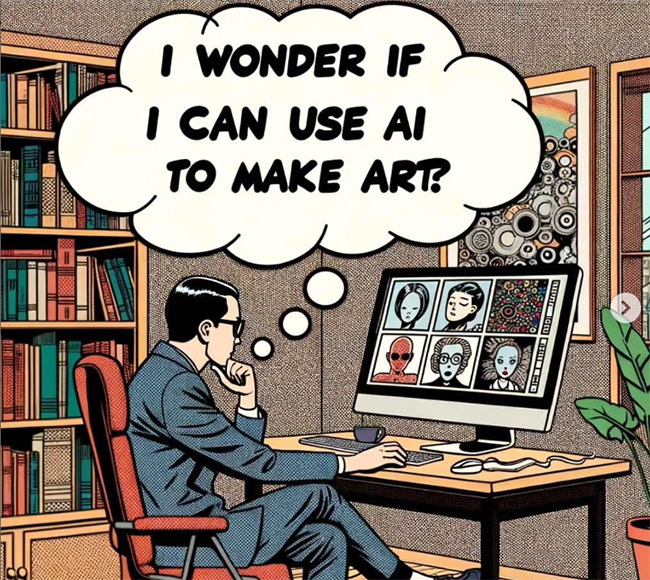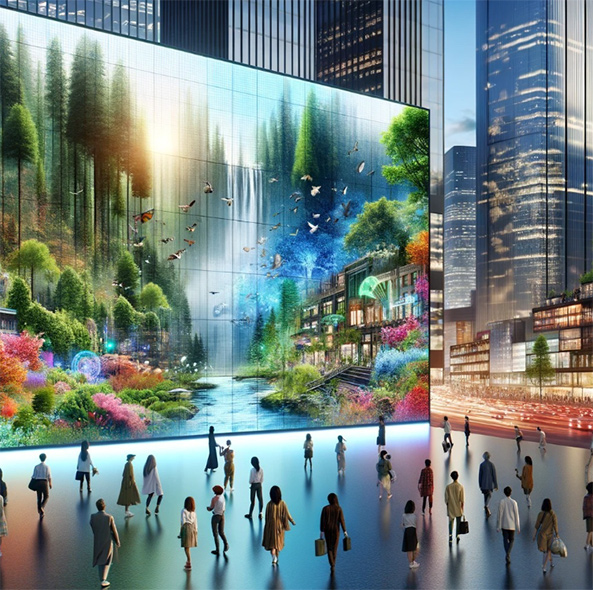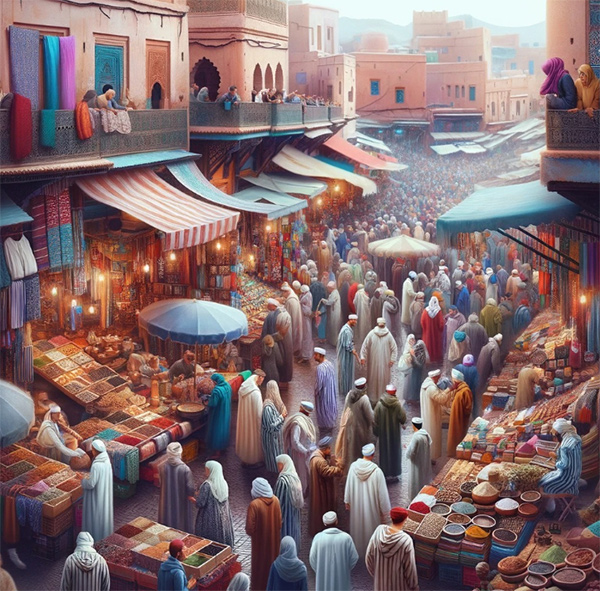Revolutionising Creativity: AI's Impact on the Art World

Photo credit: Instagram
AI's capabilities in the art domain are vast and varied, ranging from generating complete images to assisting in complex design processes
The advent of Artificial Intelligence (AI) in the art world signifies a transformative era, one where the boundaries of creativity and technology are being redefined. This integration of AI into the realm of art has opened up a plethora of possibilities, radically transforming artistic practices and the way we perceive art.
AI's capabilities in the art domain are vast and varied, ranging from generating complete images to assisting in complex design processes. These advanced tools can create art from scratch, mimic established styles, or even blend different genres to produce something entirely new and unique. AI algorithms are capable of analysing and learning from existing artworks, enabling them to generate pieces that are both innovative and reflective of historical artistic trends. These advanced capabilities can serve as a new canvas for creative artistic expression.
As we delve deeper into the nuances of AI’s influence in the art world, it’s important to explore not only how it is reshaping artistic practices but also the challenges it brings and the potential opportunities it creates for businesses within the art world.
How Artists Can Leverage AI
 Dalle3 images a futuristic cityscape. Photo credit: Instagram
Dalle3 images a futuristic cityscape. Photo credit: Instagram
In the realm of artistic creation, AI is a revolutionary force, opening doors to new forms of expression and collaboration. Artists can leverage AI to enhance and support their creative process in multiple ways.
For instance, artists can use AI tools for inspiration and research. AI allows artists to quickly access a vast repository of artistic styles, historical trends, and cultural motifs, gaining insights that would take countless hours to compile manually. AI algorithms, with their ability to process and analyse large datasets, can uncover hidden connections and patterns within art history, suggest novel combinations of styles, or even simulate the evolution of artistic movements.
This wealth of information and perspectives not only fuels the artist’s imagination but also informs their research, providing a richer, more nuanced understanding of their craft. As a result, artists can use AI to broaden their creative horizons, drawing on a diverse array of influences and ideas to enrich their work in ways previously unimagined.
Additionally, artists can save time in the conceptualisation stage by using an AI art generator to visualize their ideas through various lenses. An AI art generator allows the artist to quickly view their idea in different colour schemes, perspectives, and modifications, enabling them to see multiple iterations of their concept. Once they identify the version that resonates most with their vision, they can proceed to draw, paint or sculpt it. This method is significantly more efficient than manually creating various versions of your art concept until you find the one you like best. Hence, artists will have more time to focus on creative ideation and expression.
How Businesses in the Art World Can Leverage AI
AI presents numerous advantages for businesses in the art world, offering both creative and operational enhancements. Art galleries, for example, can greatly benefit from AI's analytical capabilities. Curators can use AI to analyse popular art collections, gaining insights into audience preferences and trends. This information is invaluable for tailoring exhibitions to visitor interests, providing a more engaging and satisfying experience.
In the specialised field of art restoration, AI once again proves to be a powerful tool. AI models can meticulously examine artworks that require restoration, creating detailed images of the missing or damaged parts. By considering the existing elements of the artwork, these models help conservators understand the original context and style, enabling a more accurate and faithful restoration process.
Beyond these art-specific applications, AI's utility extends to various operational business tasks. This includes routine but essential business functions such as drafting emails, managing customer relations, and organizing databases. Moreover, AI's ability to analyse market trends and consumer behaviour can aid in developing innovative marketing strategies. This allows businesses in the art world to effortlessly craft targeted marketing campaigns and promotional efforts.
In essence, AI not only provides strategic art insights but also streamlines day-to-day operations, thus helping art businesses thrive in a competitive market. This integration of AI into different facets of the art sector demonstrates its versatility and efficiency. Overall, AI can contribute significantly to the growth and development of businesses in the art world.
Navigating the Risks of AI in the Art World
 A Moroccan market scene, created by Dalle3. Photo credit: Instagram
A Moroccan market scene, created by Dalle3. Photo credit: Instagram
The integration of AI in the art world is not without its challenges. One of the primary concerns is the issue of copyright and originality. As many AI art generators draw from existing online art databases, they risk reproducing styles or elements of established artists, potentially leading to copyright infringements. This challenge necessitates the development of a careful approach to respect intellectual property rights.
Moreover, the creation of art using AI technology sparks debate over its true authenticity and creative value. While AI has the impressive ability to emulate various artistic styles, it falls short in encapsulating the unique emotions, experiences, and perspectives that are essential to creating truly original art. This situation poses a threat to the value of human creativity, potentially leading to art that, while technically impressive, lacks the depth and soul that are hallmarks of genuine artistic expression.
Additionally, there's a growing concern regarding AI's potential impact on human artists. This concern stems from the possibility that AI, with its ability to quickly learn, adapt, and produce art, might outpace the capabilities of human artists in certain aspects. As a result, traditional art forms, which rely heavily on human skill and creativity, might become undervalued. Therefore, it is essential to find a balance where AI is used as a tool to enhance and expand human creativity, rather than as a substitute for it. In this pursuit, we must consciously value and acknowledge the irreplaceable human touch and emotional depth that AI cannot replicate, ensuring that the art world remains a diverse and human-centric space.
Overall, the integration of AI into the art world is a complex yet enriching development. While it brings forth new ways of creating and experiencing art, it also poses significant challenges. As we navigate this new landscape, it is imperative for both society and the art world to embrace AI thoughtfully. The focus should be on finding harmony between AI and the timeless value of human artistic expression. This approach will ensure that AI positively transforms the art world, enriching both the creation and appreciation of art.
Explore the work of Artezaar and meet our other exhibitors here
Author Shreya Alagramam from Artezaar.com